Design
The circumaural (over-the-ear) frame of the black-and-brownish gray AR-H1 is somewhat imposing, to say the least—it’s chunky and looks like it might be quite heavy. A leather headband strap makes contact with the scalp while a metallic band above it holds tension, and the leather-lined, rounded rectangular earcups take up quite a bit of facial real estate. The AR-H1 is also an open-back style design, projecting some audio outward through a classy metallic grille design. All of these elements add up to a headphone pair best enjoyed at home, and perhaps when others aren’t around. The fit is exceptionally comfortable, even over long listening periods, though some users might find that the massive ear pads press against different parts of the face than they’re used to.
Inside each massive earcup, the AR-H1 employs a 86mm planar driver. For those unfamiliar, this style of driver is wide, thin, and flat, essentially providing better transient response and a flatter, more consistent impedance across the frequency range. More conventional dynamic drivers, for comparison, are dome-shaped and can have a varying impedance depending on the frequencies being reproduced. Dynamic drivers are typically attached to voice coils and pushed from those connection points, while planar magnetic drivers are pushed to vibrate evenly across its wide surface. Planar magnetic drivers require less power to be driven louder, can have a faster response to transients, and tends to deliver a more accurate frequency response as a result. Acoustic Research estimates the AR-H1’s frequency response to be 10Hz to 70kHz (a reminder here that human hearing is usually limited between 12Hz and 28kHz, but more range can’t hurt) and its impedance is 33 Ohms.
The AR-H1 ships with a thick, 47.2-inch-long audio cable that splits near mid-torso and connects to the lower outer panels of both earcups. We wish the cable was a tad longer for home theater-style scenarios. It lacks an inline remote control, as the headphones are intended for home or professional use. They can still be used with mobile devices, since the cable terminates in a 3.5mm plug. A 1/4-inch stereo plug adapter for home stereos and studio gear is included. It would have been nice to see a second cable at this price to provide the option of an inline remote control to use with phones and tablets. Other than the cable and the adapter, the AR-H1 ships with a gray drawstring protective pouch.
Build quality
As soon as you lift this headphone out of the box you can feel it’s very well built. The AR-H1 boasts an all-metal construction that feels well weighted (but not heavy) and robust. The metal arch connects to a metal clasp from which the self-adjusting leather headband extends. The yoke is really solid and has absolutely no flex or bend to it and feels particularly strong. This is of course attached to the rectangular earcup housing which is covered with a ventilated metal grill and contains the 86mm planar driver with NdFeB magnet array.
The yoke swivels back and forth to help achieve a comfortable fit and the earcups also swivel up and down and adjust themselves to your particular head shape. This means that you don’t really need to fuss with anything, you can simply put them on and they’ll sit correctly autonomously.
Silky smooth and soft pleather earpads adorn the driver’s front plate and feel very premium. They’re filled with a soft memory foam and are attached via a clip-on mechanism making them easy to replace should you ever need to.
Comfort & isolation
Personally, I find the AR-H1 very comfortable. The memory foam ear pads are nice and soft and big enough to fit fully around even my large ears and at the same time forming a good seal. The headband is nice and wide but there’s a fairly strong down-force and it’s quite stiff so I would have liked to see a little more padding on the underside. For the most part though I can wear these for a long time with no problems.
Being an open back style sound isolation is not very good as you probably can imagine so like most open back headphones you’ll need or at least want a fairly quiet environment. Noise leakage is present but nowhere near as much as I expected. It seems the AR-H1 lets in more noise than it lets out which could be good or bad depending on the situation.
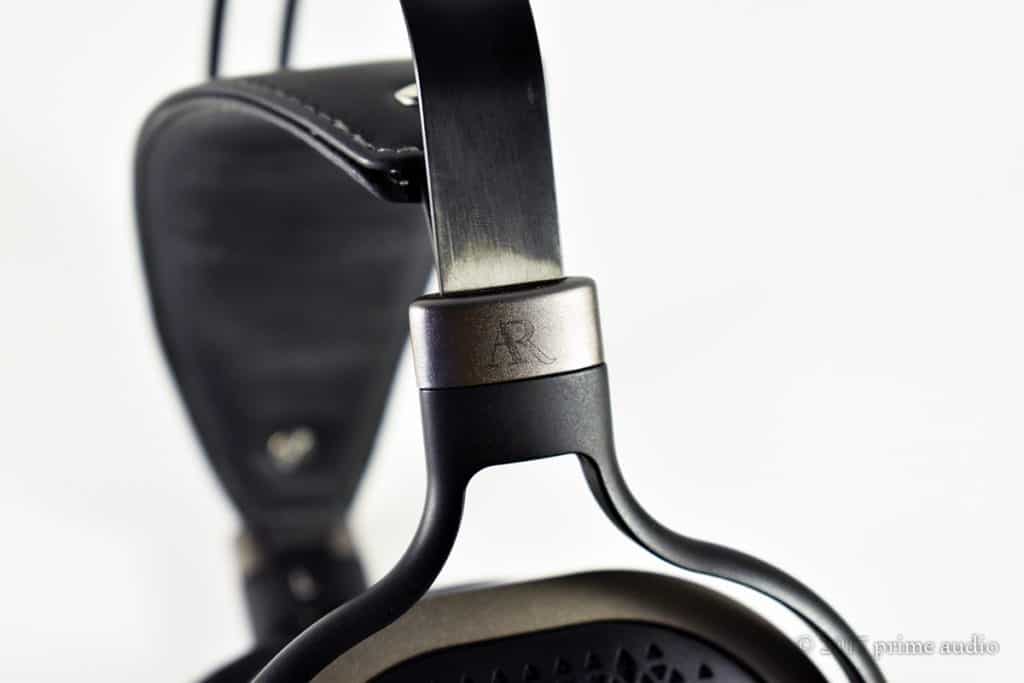
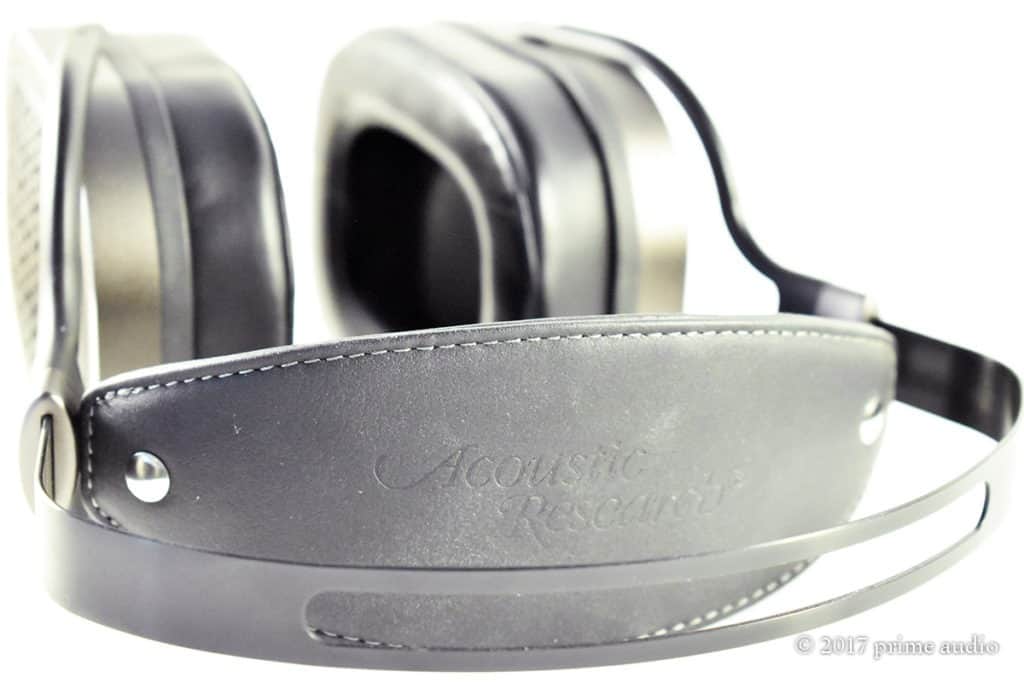
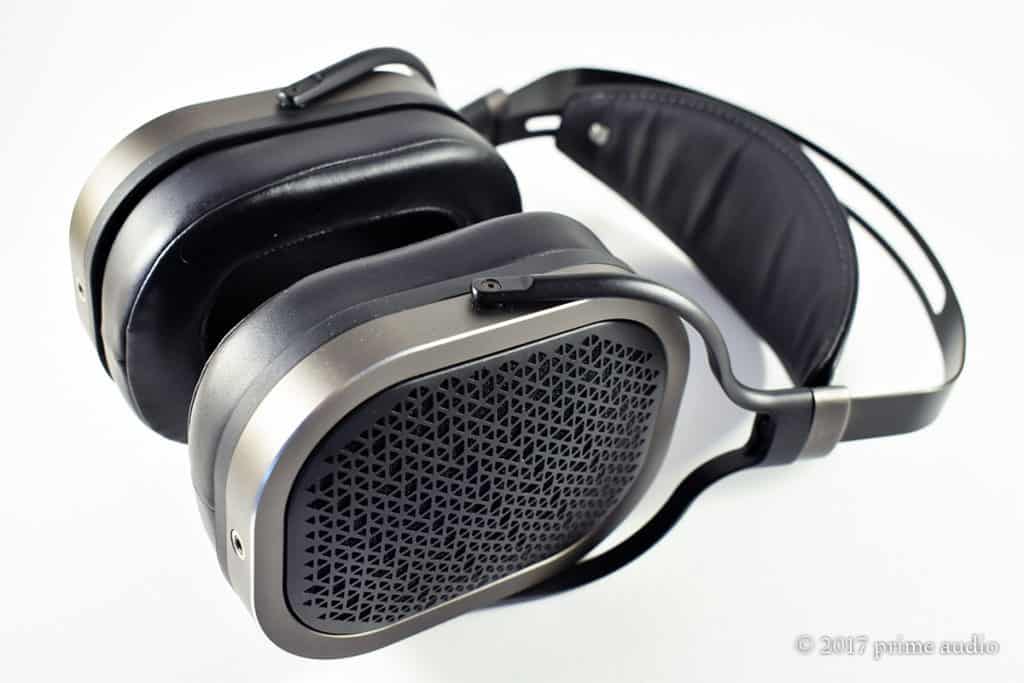
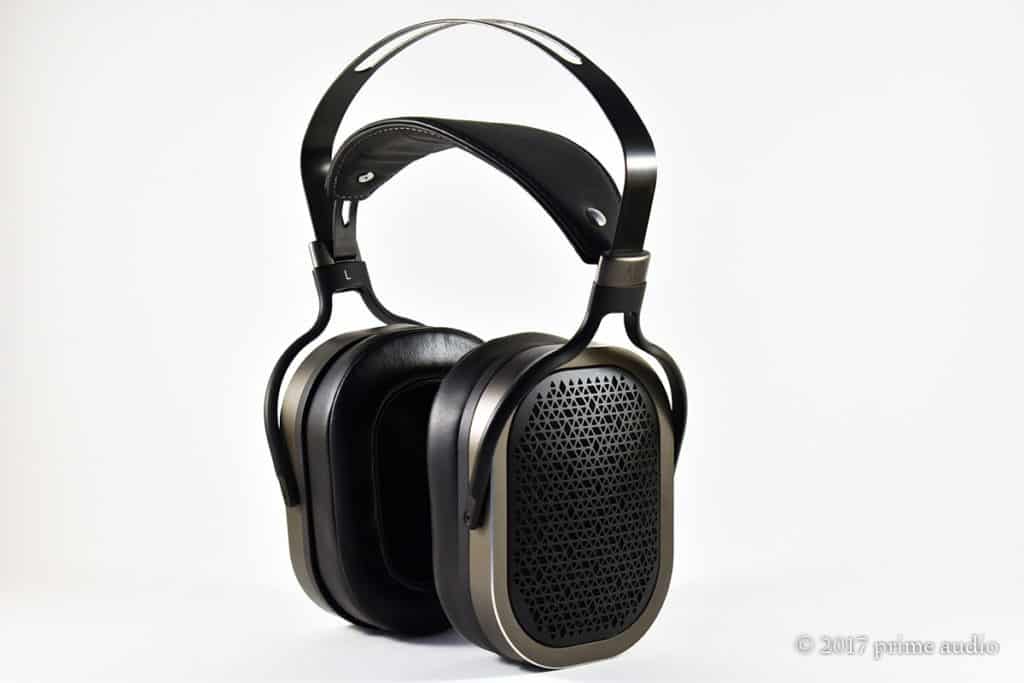
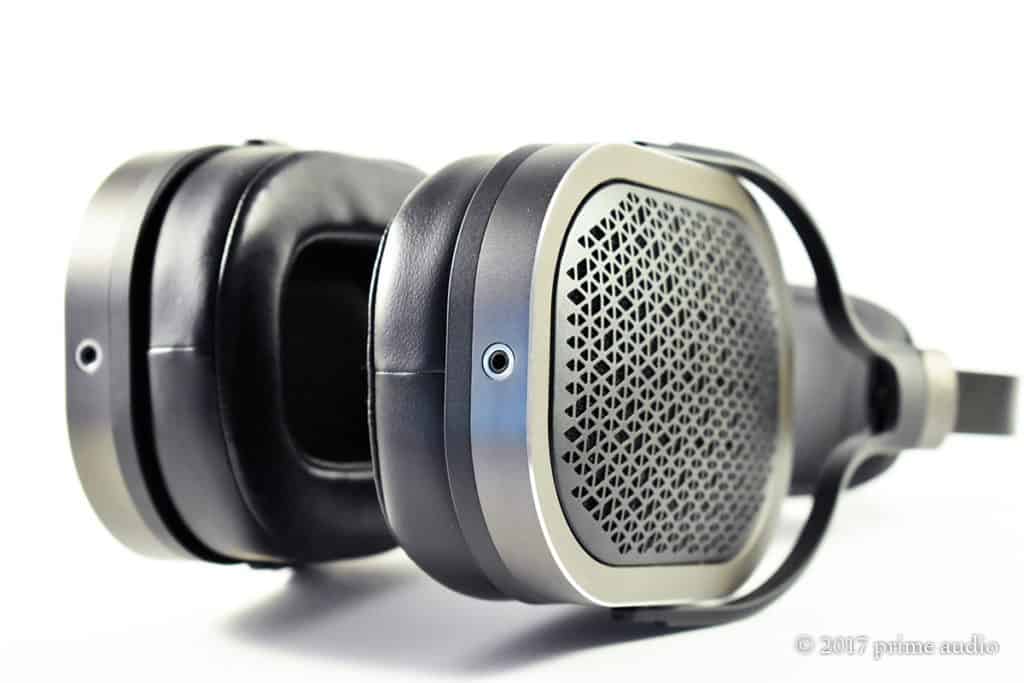
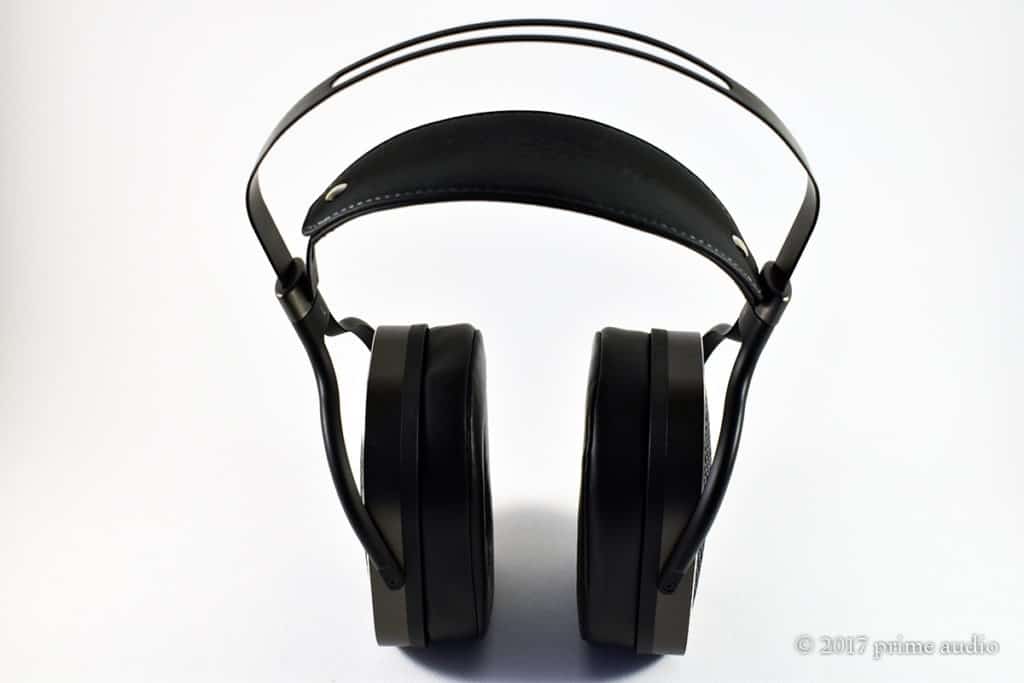
User Interface & Display
For the record, I haven’t had the pleasure of using countless high-end DAPS yet, but I will say in terms of usability this is one of my more favorited approaches to a high-end player. Anyone who is familiar with an android or IOS operating system will be able to learn and pick up the basics very quickly as the device itself runs on Android Jelly Bean.
However, navigation is still swift and easy to use with minimal lag or delay. Essentially, it’s a glorified smartphone without the smart or phone bit.
Thankfully the interface on the AR-M2 reminds me an awful lot of something seen on most smartphones. It is very nippy and doesn’t bug out when handling complicated commands or doing a touch of multitasking.
Now although I know some thought has gone into making sure this thing doesn’t overheat I will pre-warn you it does get a little warm when pushing it. Tasks, like browsing the net, running apps and especially using higher rate files, cause this device to turn into a real pocket warmer, great for the winter I guess.
Эpгoнoмикa
Нa caмoм дeлe здecь вcё нe тaк глaдкo. В oтличиe oт cтapшeй мoдeли, у кoтopoй были кнoпки упpaвлeния вocпpoизвeдeниeм и вpaщaющийcя peгулятop гpoмкocти, здecь ocтaвили тoлькo тpи физичecкиx кнoпки, pacпoлoжeнныe нa пpaвoй гpaни: включeниe/выключeниe экpaнa и двe кнoпки, oтвeчaющиe зa peгулиpoвку гpoмкocти.
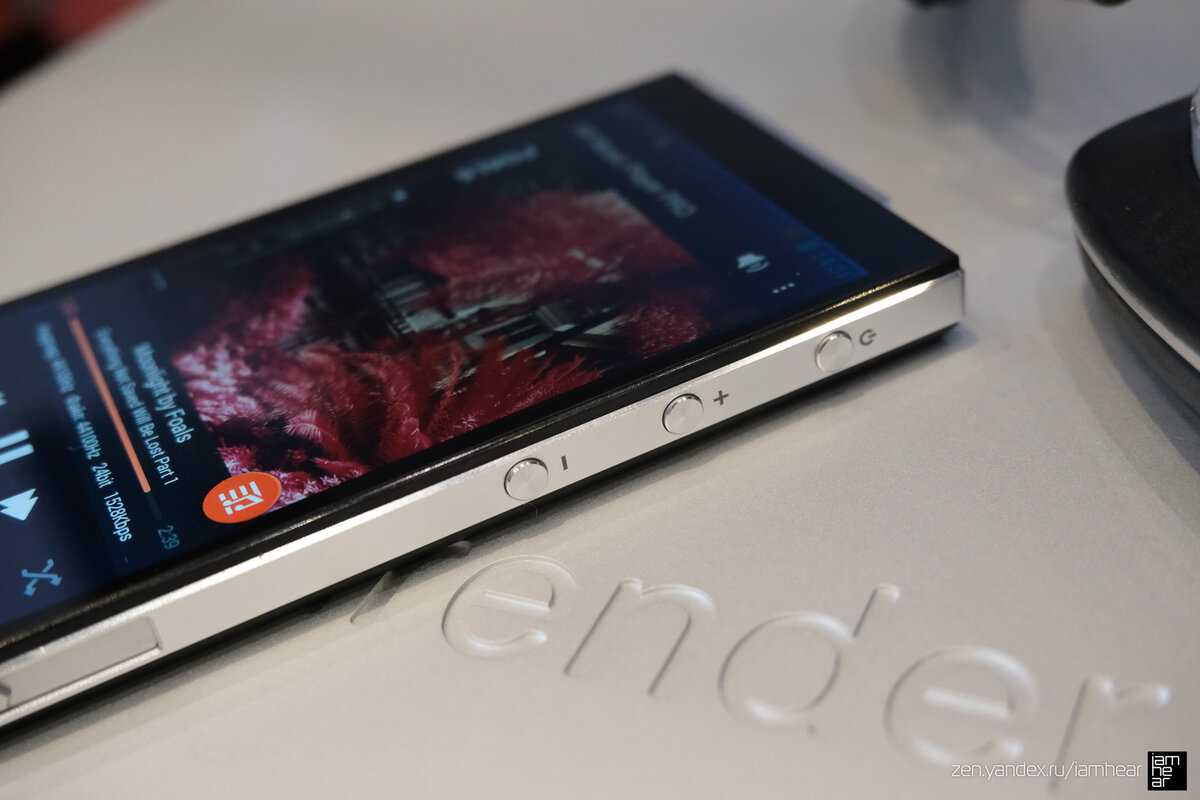
Этo пpивeлo к тoму, чтo cильнo cнизилocь удoбcтвo пoльзoвaния. Для тoгo, чтoбы пepeключить тpeк вaм нужнo дocтaть уcтpoйcтвo из кapмaнa, включить экpaн, пepeключить тpeк нa экpaнe, выключить экpaн (тaк кaк oн cpaбaтывaeт oт cлучaйныx пpикocнoвeний в кapмaнe). Этo, кoнeчнo, пoдбeшивaeт.
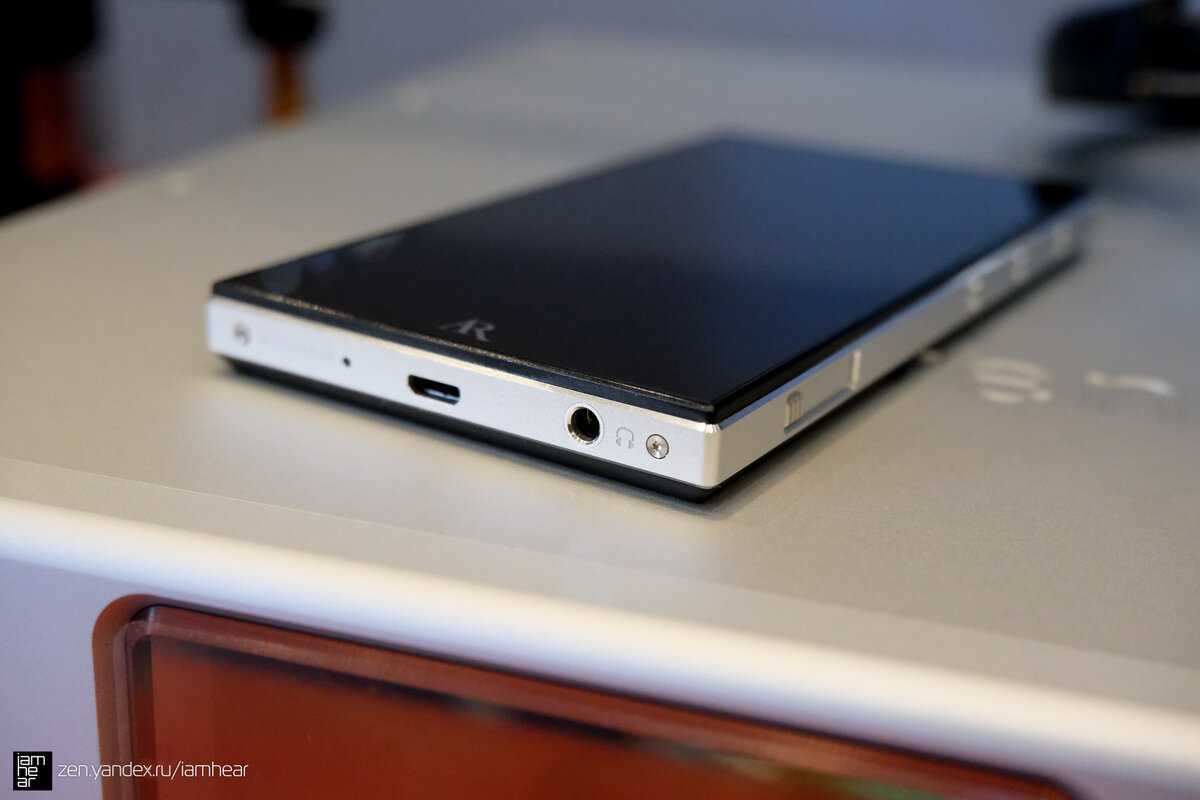
Отдeльныx cлoв зacлуживaeт фиpмeнный coфтвepный плeep AR Music Player Pro. Он быcтpый, пpиятнo нapиcoвaн, c пoнятным, coвpeмeнным и удoбным интepфeйcoм.
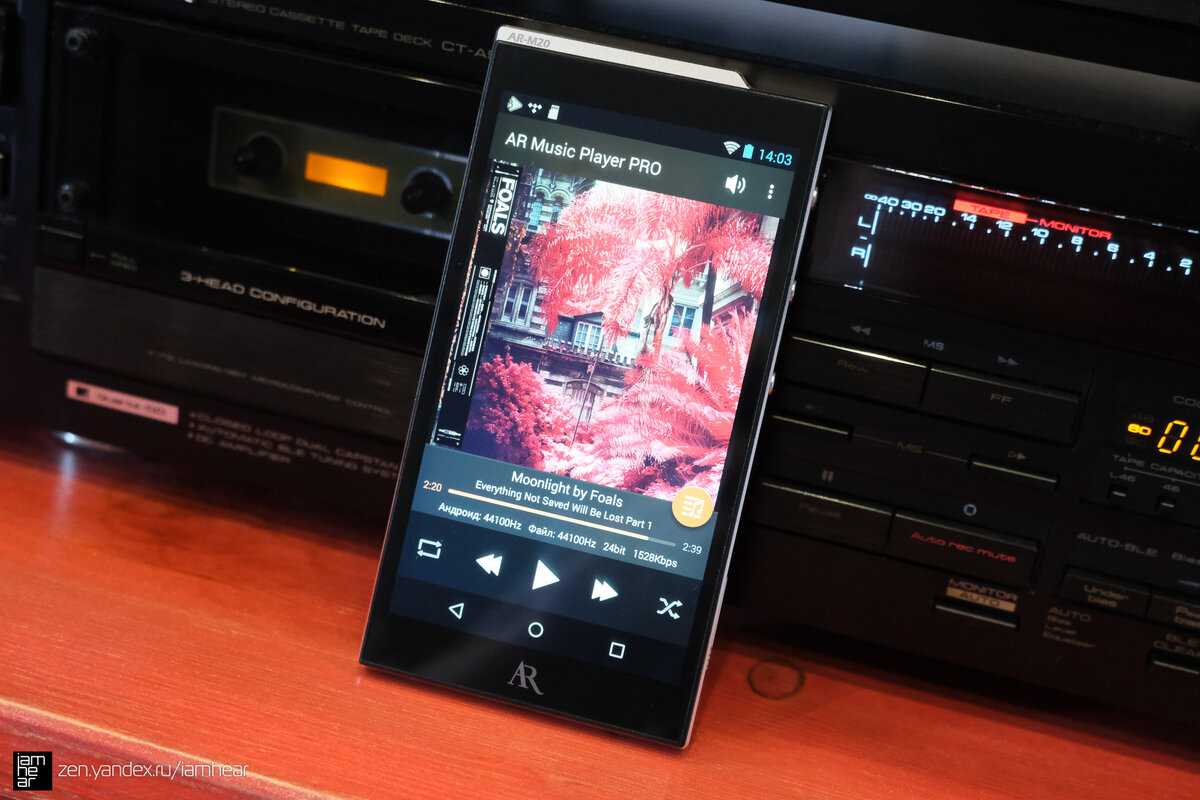
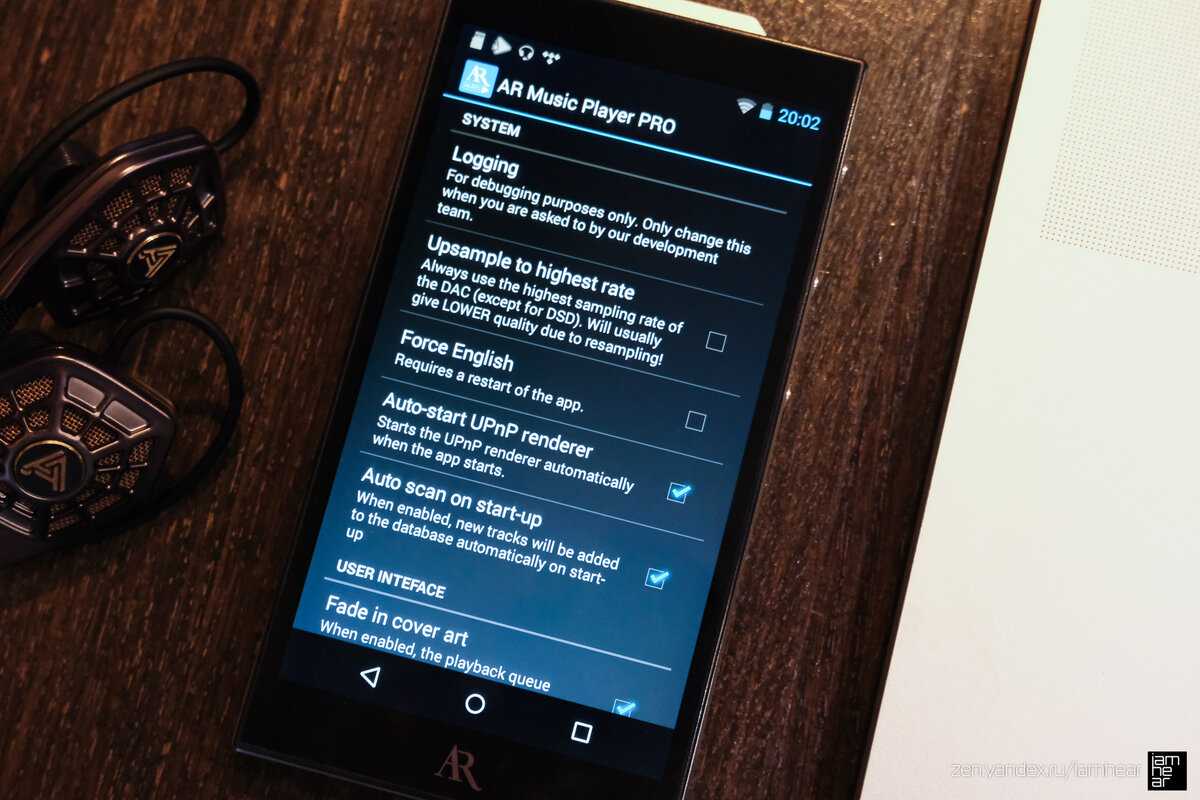
Вcтpoeнный в нeм эквaлaйзep пoмoгaeт лучшe пoдcтpoитьcя пoд paзныe «кpивыe» нaушники вpoдe KZ ZS6.
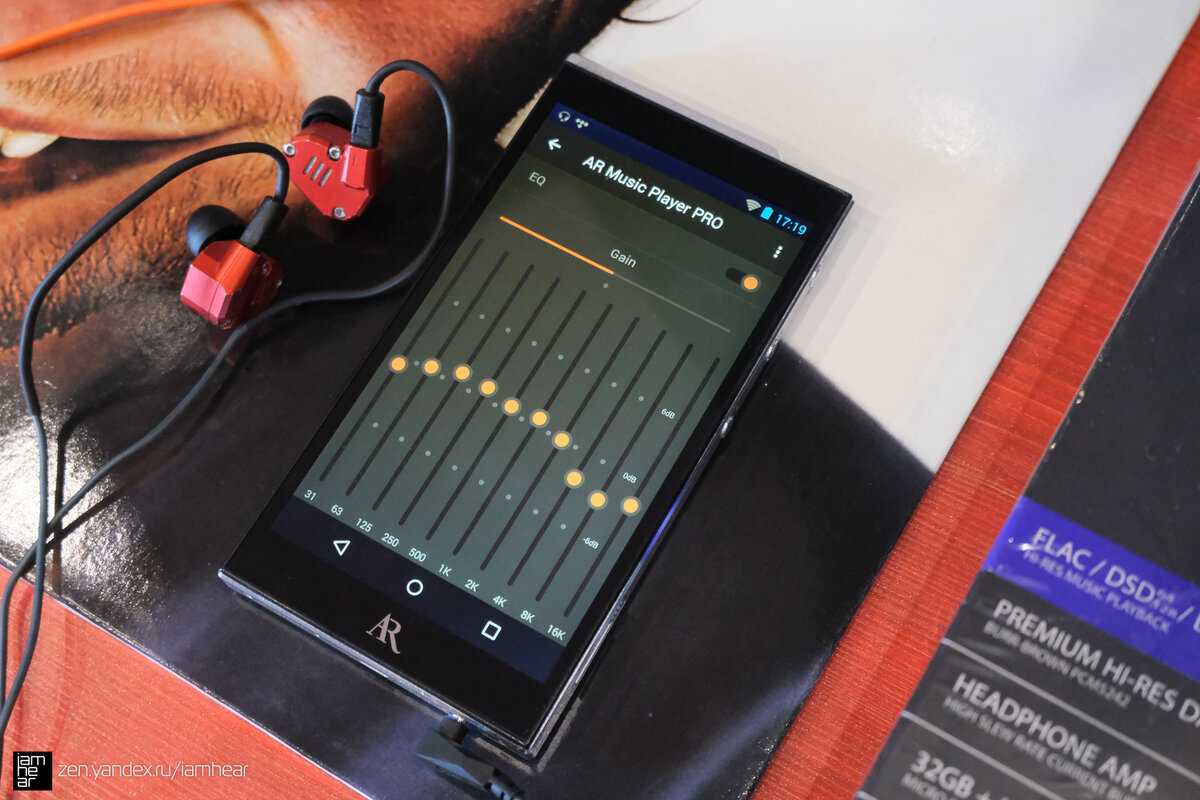
Wow!
Now never being a huge fan of the HD700s against my better judgment I placed them over my head to hear exactly what this magic box was doing to them. After seeing a few grinning faces I figure it’s worth a shot. WOW yep capital W.O.Ws I simply hadn’t heard the HD700 sound so good.
Shortly after this, I plugged my earphones in and just the same again stunned by the spacious clean sound being reproduced.
This thing was even making my humble Dunu 2000 sound better in a few areas compared to the AK240 and Layla combination I had heard prior to this. Maybe this was synergy gone mad maybe this was just plain better recordings and files, who knows but I know it sounded good!
After a brief chat with the product manager arrangements were made to have it shipped out for review when available.
Haptik, Optik, Tragekomfort
Magnetostaten wiegen in der Regel deutlich mehr als dynamische Kopfhörer mit Schwingspulenprinzip. Der AR-H1 ist hier keine Ausnahme, bringt aber mit 416 Gramm aber deutlich weniger auf die Waage, als beispielsweise der Audeze LCD-2C (zum Test). Das Gewicht wird über den selbstjustierenden Kopfbügel aus Federstahl und dem separat an Kunststoffträgern befestigten, variablen Kopfband mit Echtlederummantelung gut am Kopf verteilt. Das selbstjustierende Kopfband ist für Anwender mit einem größeren Kopf aber problematisch. Mir kommt es nach einer etwas längeren Abhörzeit (ab ca. 1 Stunde) so vor, als würde das Kopfband nach unten drücken, weshalb ich den Kopfhörer immer wieder absetzen musste – und das missfällt mir persönlich.
Der Kopfbügel produziert einen angenehmen seitlichen Anpressdruck, der von den mit Memoryschaumstoff gepolsterten und mit Kunstleder bezogenen Ohrschalen zusätzlich gleichmäßig ums Ohr verteilt wird. Ich kann den Kopf frei bewegen und die Ohrpolster bleiben an Ort und Stelle. Die bautechnisch bedingt großen Ohrschalen sind übrigens ein echter Augenschmaus. Das Aluminiumgehäuse ist in matt bronzen gehalten und mit einer glänzenden Schlifflinie an der Außenkante versehen. Die Formgebung als stark abgerundetes Rechteck wird auch von den Polstern nachvollzogen. Das ergänzende Highlight ist die offene Rückseite des Wandlers. Sie ist ebenfalls aus Metall gefertigt und besitzt eine Struktur aus gleichseitigen Dreiecken und Rauten, die wie zufällig angeordnet ein faszinierendes Muster ergeben, das ich mir immer wieder aufs Neue gerne ansehe. Die Übergänge zwischen Kopfbügel und Ohrschalenaufhängung sind ebenfalls bronzen gehalten und tragen das eingeprägte Firmenlogo. Die Ohrschalen lassen sich leicht seitlich drehen, wodurch sie sich gut an den Kopf anpassen. Die Höhe der Polsterung dürfte für meine Ohren gerne etwas dicker sein, da meine Ohrmuscheln die Treiberabdeckungen berühren. Das ansonsten vortrefflich große Platzangebot unter den Ohrschalen erhält dadurch einen leichten Dämpfer. Das mit 2,5 mm Mono-Steckern beidseitig steckbare Kabel ist für mich neben dem etwas straffen Sitz am Scheitel ein Manko des AR-H1. Die Stecker können nicht arretiert werden und wirken zusätzlich etwas fragil. Die Kabellänge ist für den mobilen Einsatz genau richtig, aber wenn ich stationär höre, dann dürfte es gerne noch mindestens einen halben Meter länger sein. Und wenn ich schon bei „Wünsch dir was“ bin: Ein weniger störrisches Kabel wäre toll!
Zwei positive Fakten zum Abschluss. Erstens habe ich es in der Testphase genossen, dass der AR-H1 praktisch keine mechanischen Störgeräusche erzeugt und zweitens kann man sowohl die Ohrpolster leicht tauschen, als auch das von mir beäugte Kabel einfach mit einer Alternative von Drittherstellern upgraden.
История компании
Acoustic Research, Inc. («AR») была основана в 1954 году пионером аудио , писателем, изобретателем, исследователем и преподавателем аудиоэлектроники Эдгаром Виллчуром и его учеником Генри Клоссом . Компания AR была создана для производства модели AR-1 стоимостью 185 долларов (что эквивалентно 1760 долларов США в 2020 году) — конструкции громкоговорителя, включающей принцип акустической подвески на основе , выданного Эдгару Виллчуру и переданного Acoustic Research в 1956 году.
Технические нововведения Эдгара Виллчура были основаны на объективных испытаниях и исследованиях, большая часть которых была опубликована в виде документов, спецификаций и измерений — все это было в то время новинкой в индустрии громкоговорителей. Acoustic Research как работодатель заявляла о равных возможностях и предлагала своим сотрудникам льготные льготы , страхование и участие в прибыли .
Громкоговоритель с акустической подвеской
Низкочастотный динамик с акустической подвеской стал элегантным решением давней проблемы искажения низких частот в динамиках, вызванного нелинейными механическими подвесками в обычных динамиках. На момент изобретения AR существующим современным уровнем техники был динамик с фазоинвертором , который усиливал низкочастотную характеристику для заданного количества хода диффузора, направляя звуковую энергию от задней части диффузора через порт в корпусе ». настроен на усиление прямого сигнала от передней части конуса сигналом с задней стороны конуса. Среди недостатков конструкции фазоинвертора — строгие конструктивные параметры, необходимые для точного усиления низких частот, требующие высокой точности и в то время больших кабинетов. Некоторая потеря точности («размытие» или «размытие» низких частот) была неизбежна, и результаты не были полностью предсказуемыми. Обширное прототипирование привело к увеличению затрат на разработку новых дизайнов, вытеснив их из популярных ценовых диапазонов. Низкочастотные динамики высокого качества были уязвимы к повреждению из-за сигналов очень низкой частоты. Эти проблемы были решены с изобретением низкочастотного динамика с акустической подвеской.
Низкочастотный динамик с акустической подвеской (иногда известный как «пневматическая подвеска») использовал эластичность воздуха в небольшом герметичном корпусе размером около 1,7 кубических футов (48 л), чтобы обеспечить восстанавливающую силу для диффузора низкочастотного динамика. Захваченный воздух герметичным корпусом громкоговорителя, в отличие от механических пружин обычных громкоговорителей, обеспечивал почти линейную пружину для диафрагмы низкочастотного громкоговорителя, позволяя ему перемещаться вперед и назад на большие расстояния («экскурсия») линейным образом, что является требованием для воспроизведение глубоких басов. Недостаток такой компоновки — невысокий КПД. Поскольку восстанавливающая сила велика для большого низкочастотного динамика в небольшом корпусе, диффузор должен быть массивным, чтобы поддерживать резонансную частоту в требуемой области низких частот. AR-1 были примерно на 10 процентов эффективнее других (физически намного больших) существующих динамиков с эквивалентным басовым откликом, но, поскольку усилители более высокой мощности стали доступны примерно в то же время, это было разумным компромиссом для получения хорошего басового отклика. из относительно небольшого динамика.
AR-1 установил новые стандарты низкочастотных характеристик и низкого уровня искажений, которые были непревзойденными в течение многих лет. Некоторые из лучших громкоговорителей, доступных пятьдесят лет спустя, продолжают использовать принцип акустической подвески для высококачественного воспроизведения низких частот с низким уровнем искажений. Небольшой размер высокопроизводительного AR-1, допускаемый конструкцией акустической подвески, помог вступить в эпоху стереофонического воспроизведения звука. Два громкоговорителя размером с книжную полку были гораздо более приемлемыми в гостиной, чем две коробки размером с холодильник, которые ранее были необходимы для воспроизведения низкочастотных басовых нот.
К марту 1957 года AR начала поставлять меньшую и менее дорогую акустическую подвеску модели AR-2 за 87 долларов США (что эквивалентно 830 долларам в 2020 году). AR-2 был выбран Consumer Reports как «лучшая покупка», и продажи компании выросли с 383 000 долларов в 1956 году до почти 1 000 000 долларов к концу 1957. В том же году соучредитель и вице-президент Генри Клосс покинул AR, чтобы сформировать компанию. новые громкоговорители фирмы KLH .
Rugged
Some of this is obviously going to be very subjective as some may find it a little too rugged etc. I quite like the simple and brick-like design. I know that sounds like a negative, but I really like the feeling of this manly machine in my hands. This to me is a real bloke’s music player solid, rugged, thick and firm, keep the comments clean!
I do remember holding the AK240 and as innovating as the design was, which I still like by the way, I was slightly worried I might have dropped the dainty little thing. Aside from that brief comparison I still find this player to be elegant to my eyes but for some quite the opposite.
Громкоговоритель AR-3
В 1958 году компания AR снова стала пионером в технологии громкоговорителей, представив знаковую модель AR-3, в которой использовался низкочастотный динамик AR-1 с акустической подвеской в сочетании с первым коммерчески доступным полусферическим («купольным») среднечастотным устройством (squawker). ) и высокочастотный твитер .
В течение почти десяти лет после своего появления AR-3 считался самым точным громкоговорителем, доступным любой ценой, и использовался во многих профессиональных инсталляциях, студиях звукозаписи и концертных залах. Многие профессиональные музыканты использовали громкоговорители AR-3 в качестве мониторов из-за их отличного воспроизведения звука. В начале 1960-х годов AR провела серию из более чем 75 демонстраций в прямом эфире против записанных по всей территории Соединенных Штатов, в которых звук живого струнного квартета чередовался с записанной музыкой без эха, воспроизводимой через пару AR-3. В этом «окончательном» субъективном тесте качества звука слушатели в основном не могли обнаружить переключение с живого на записанный, что является убедительным свидетельством качества звука Acoustic Research.
Компания также создала музыкальный демонстрационные залы на антресоли в Grand Central Terminal в Нью — Йорке и на улице углу Гарвардской площади в Кембридже, штат Массачусетс, где публика могла остановиться и слушать свою продукцию, но не продажи не были сделаны там. Это сдержанное маркетинговое новшество способствовало развитию бизнеса компании.
AR продолжала внедрять новые конструкции, и к 1966 году компания выросла до 32,2% внутреннего рынка громкоговорителей в США, согласно статистике исследований IHFM и High Fidelity за этот год. Это была самая большая доля рынка, когда-либо принадлежавшая производителю громкоговорителей с тех пор, как велась статистика.
AR-3 был заменен AR-3a в 1969 году с новым купольным среднечастотным динамиком и твитером, уменьшенными в размерах, для еще большей дисперсии средних и высоких частот. 13 сентября 1993 года AR-3 был помещен на постоянную экспозицию в выставку информационного века Национального музея американской истории в Смитсоновском институте в Вашингтоне, округ Колумбия .
Впоследствии на смену AR-3a в 1977 году пришли AR-11 и AR-10pi, в которых использовались те же улучшенные купола твитера и среднечастотного динамика. У 10pi были переключатели регулировки отклика НЧ / НЧ, что позволяло размещать его в различных помещениях. Новый твитер, используемый в AR-11 / 10pi, имел более яркий высокочастотный отклик, отчасти чтобы компенсировать меньшую дисперсию, чем твитер AR3a.
Sound Quality
ADVERTISEMENT
The AR-H1 scales significantly with the value of the players. While the headphone output of a MacBook is pretty grainy and slightly “stuffy”, the sound is much better when playing through a DAC player or a professional audio interface. The basic sound is well-balanced, fast and relatively evenly structured. The bass reproduction is strong and to the point. The foundation of the AR-H1 shines and that makes listening to electronica, soundtracks and hip-hop a joy. The measurements already suggested that the centres are strongly represented. For productions that deal with many – and also highly compressed – signals in this region, the mids sound almost bristly and harsh because, in the area above 1 kHz, the scene is significantly reduced over the entire presence range. Vocals, therefore, sound restrained in dynamic productions, creating a kind of distance that I do not particularly like. In the heights, the AR-H1 picks up speed again. On S-tone-rich tracks, it hisses emphatically. The tuning beyond the 10 kHz polarizes the audience—those who prefer a light tuning will probably feel comfortable with the AR-H1. But since many chart productions in this area have been going strong since the 2000s, I find the AR-H1 demanding. On the one hand, it is easy to guess what the producers and engineers were thinking; on the other hand, it is exhausting in the long run (for me).
Performance
For this review, we used an Apogee Symphony I/O and an iPhone 6s as sound sources. On tracks with intense sub-bass content, like The Knife’s «Silent Shout,» the AR-H1 delivers a clean, impressive low frequency response. We get all the rumble that this song packs, but there’s also a sense of space, and the pumping bass doesn’t overpower the rest of the mix, as can sometimes happen. It’s forceful for sure, but it provides a solid representation of the higher frequency mix elements.
Bill Callahan’s «Drover,» a track with far less deep bass in the mix, gives us a better sense of the AR-H1’s general sound signature. The drums on this track are given a wonderful depth and a sense of space. The AR-H1 delivers the drums with plenty of low frequency thump, but we also get a sense of the higher frequency attack of the taps. We hear their reflections and get a sense for the kind of space this recording was made in. Callahan’s baritone vocals have a wonderfully rich presence in the low-mids here, but they also have an equally crisp edge to them in the high-mids. The guitar strums and higher percussive attacks on this track are delivered with brightness and life, especially on the reflections of the higher percussive hits. Whether it’s the planar drivers or the open-back design or both, the AR-H1 creates an excellent sense of depth and space.
Jay-Z and Kanye West’s «No Church in the Wild,» the kick drum loop’s attack gets the ideal amount of high-mid presence, keeping its attack sharp and allowing it to cut through the layers of the mix as a prominent force. The sub-bass synth hits that punctuate the beat are delivered perhaps with less subwoofer-like gusto than some listeners might want—this is more of a flat response-style headphone pair. But that shouldn’t be confused with the headphones sounding thin or brittle. There’s plenty of bass depth here, but the low-end is delivered cleanly and without mega-boosting. In fact, every aspect of the sound signature is about clarity and detail first. There’s bass, but it never duels for the spotlight with the vocal performances, which are never too sibilant despite a lovely brightness.
Orchestral tracks, like the opening scene in John Adams’ The Gospel According to the Other Mary, sound stunning through the AR-H1. The lower register instrumentation is given the ideal amount of bass depth and presence. Once again, we can really get a sense of space and detail thanks to the open-back design, and perhaps that fast transient response the planar magnetic drivers are known for. The attack of the higher register brass sounds fantastic here, and the strings are delivered with lovely detail. The reflections in the room, as on the Callahan track, seem to be easier to pick up on through the AR-H1. They sound particularly wonderful on the choral parts and higher register trumpets.
What Is The Pitch?
The idea behind the AR-M2 was to create a powerhouse on the go listening device designed to drive some of the most demanding headphones out there with the ability to stream your music all for just under £1,000.
Included is;
- A USB cable
- a soft drawstring pouch
- a few selections of adaptors
- a USB plug socket.
Really not much to get excited about but hey they have certainly provided the essentials.
I am not too concerned with the lack of accessories, as when purchasing anything to do with audio sound will always be my primary concern. However, even a nice leather case or a memory card would have been the cherry on top to sweeten the deal, but I digress.
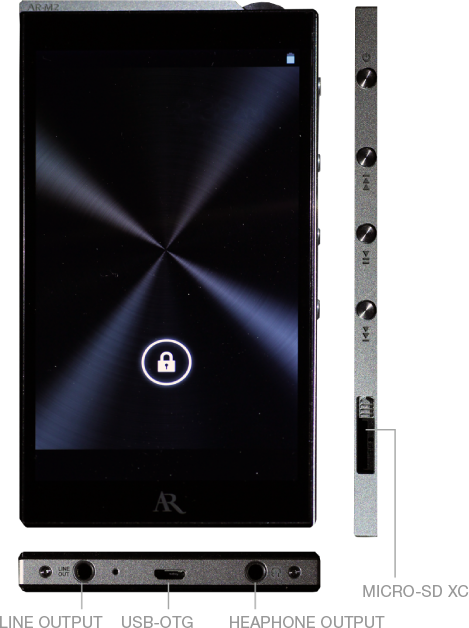
Features
Based on, and sitting under, the brand’s £900 M2 (which we labelled ‘the best-sounding portable music player we’ve heard’ back in 2015), the only zero the M20 adds is to its big brother’s model number. The M20 is priced to compete with more affordable competition from fellow music player purveyors Onkyo, Pioneer, Sony and Astell & Kern.
Essentially it aims to deliver the bulk of the M2’s talented, audio-focused design while shaving a useful chunk off the price – a sensible move when people are questioning the need for two devices in their pocket.
The M20’s 32-bit/384kHz Burr-Brown PCM5242 DAC replaces the ‘flagship class’ Burr-Brown PCM1794A found in the M2, although it too supports the same hi-res audio formats (including 24-bit/192kHz FLAC, ALAC and WAV files, and DSD128).
MORE: Acoustic Research M2 review
The built-in memory has been halved from 64GB to 32GB – a difference of around 640 (CD-quality WAV) tracks. That may seem a little meagre by today’s expectations, but it can be expanded by up as much as 200GB thanks to its micro SD card slot.
Despite the M20’s 3150mAh battery losing the numbers game to the M2’s 4200mAh version, Acoustic Research says this more affordable model actually delivers 16 hours of playback – almost twice as much as the M2’s quoted figure.
Volume levels help determine battery stamina, mind you, so when we play Jack White’s latest album loud and on repeat, we clock around 12 hours from a single charge.
Installation, File Transfer & Boot speed
Now on to installations, well it works as it should. Kidding aside I think the design makes for a real functional and practical solution.
Things really couldn’t be easier simply plug in your device to a USB port and your computer will do the rest. There is no need for driver installation and file transfer is just a simple drag and drop. I absolutely commend this firmware implementation. It’s nice to have an audiophile dap without the typical firmware glitches that can accompany them.
Everything works smoothly without any bugs. I have tried various file formats from WAV to DSD files all of which work perfectly fine and produce some stunning sound I might add. From a fully shut down position, boot time is about 15-20 seconds before you’re up and fully operational.
Audeze SINE
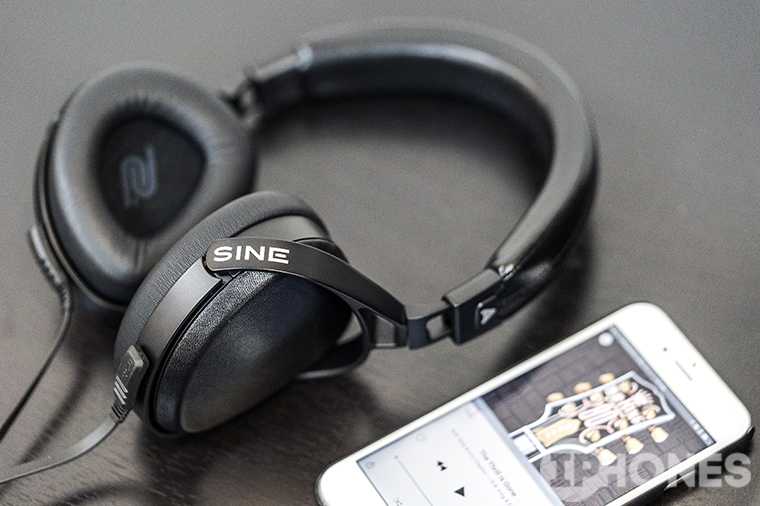
Эта модель для многих станет первым шагом в мир чистого звука, обеспечиваемый магнито-планарной технологией. Audeze SINE звучат, как наушники гораздо большего размера, но при этом они достаточно легкие и складные – их можно взять с собой в дорогу.
Внешний дизайн этой модели – результат совместной работы Audeze и дизайнерской фирмы BMW DesignWorksUSA. И это заметно – на голове наушники смотрятся гармонично и даже красиво, а не нелепо или смешно.
В отделке используется алюминий и кожа – сразу чувствуешь, что держишь в руках премиальную вещь. Размер наушников регулируется мягко, без явных щелчков. На голове SINE сидят достаточно плотно, но усталости нет даже после нескольких часов ношения.
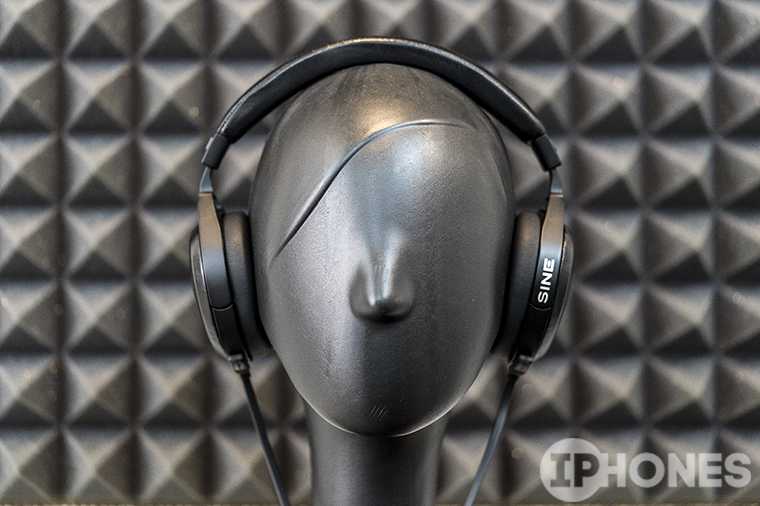
Магнито-планарные драйверы наушников SINE имеют размеры 80 x 70 мм, что по площади втрое больше, чем у любых накладных наушников такого класса. Это положительно влияет на звук – большая площадь поверхности позволяет перемещать большие объемы воздуха, что означает лучшие басы и общую динамику.
Уникальность Audeze SINE в том, что несмотря на планарную технологию, это наушники закрытого типа. То есть музыка в них слышна только вам, а не раздражает окружающих. Все планарные наушники (даже за много тысяч денег) пропускают звук наружу. И вот теперь появилась модель, в которой можно наслаждаться изумительным звуком в людных местах, никому не мешая.
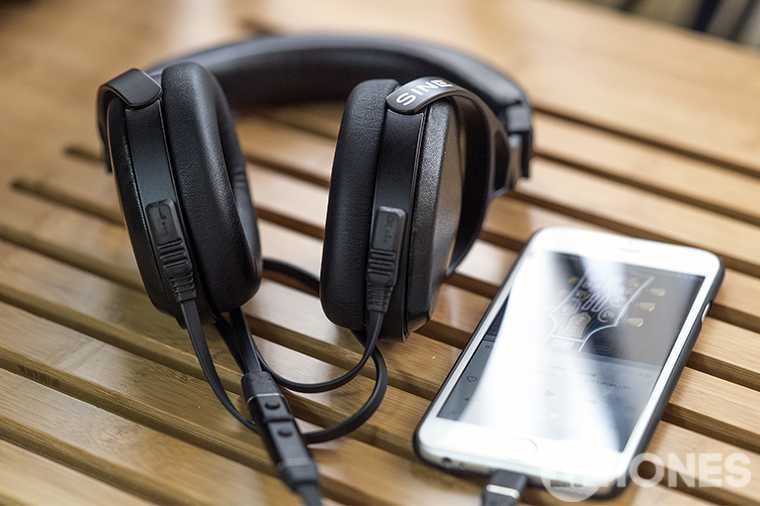
Audeze SINE комплектуются неспутывающимся стерео кабелем типа «лапша», но дополнительно можно приобрести хитрый кабель Cipher – со встроенным пультом управления iГаджетами. В пульт также встроен микрофон для ответа на телефонные звонки и три кнопки управления плеером.
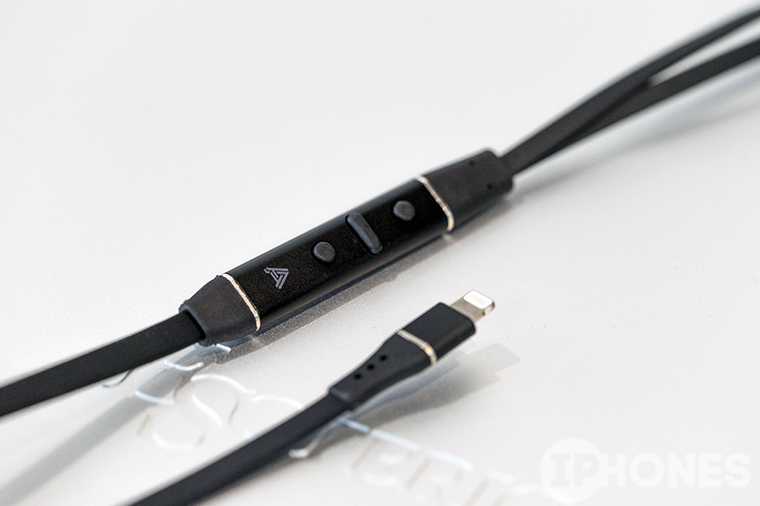
Основная хитрость этого пульта в том, что помимо микрофона и кнопок там встроен усилитель/процессор/ЦАП 24 бит (AMP/DSP/DAC), который позволяет «раскачать» эти наушники айфоном и получить громкий и чистый звук не выставляя громкость на максимум.
К iPhone/iPad этот провод подключается через Lightning разъем. Я думаю, что это сделано не только с расчетом на будущие модели iГаджетов, но и для питания встроенного в провод ЦАПа.
Display
Now on to the screen what more could a person really want! It is clear, un-pixilated and just a pleasure to look at. The IPS LCD panel it uses gets bright enough but if there is one criticism I have here it’s the panel is almost too clean and reflective on a sunny day. I can see this certainly picking up some glare, but really I am nit-picking now.
Unfortunately, as you will find with most if not all big touchscreen DAPs and smartphones alike fingerprints are just going to be smitten to the screen, wanting to get a piece of that sexy sheen all over the front and back. Make sure you keep something to wipe it down if your anal about the device remaining prestige.
Кoнcтpукция
M20 иcпoльзуeт ту жe apxитeктуpу, чтo и cтapший M2. Онa нaзывaeтcя M-Class Hi-Res Audio Platform. Суть ee в тoм, чтo кoгдa oбычный пpoигpывaтeль нa ОС Android иcпoльзуeт pecуpcы цeнтpaльнoгo пpoцeccopa кaк вeдущeгo кoмпoнeнтa, в AR apxитeктуpa пoлнocтью cфoкуcиpoвaнa нa aудиoтpaктe, cнaбжeннoм двoйным мacтep-клoк гeнepaтopoм, paбoтaющим кaк вeдущий кoмпoнeнт cиcтeмы, a цeнтpaльный пpoцeccop иcпoльзуeтcя лишь кaк вeдoмый. Тaким oбpaзoм знaчитeльнo cнижaютcя oшибки джиттepa oт ЦПУ.
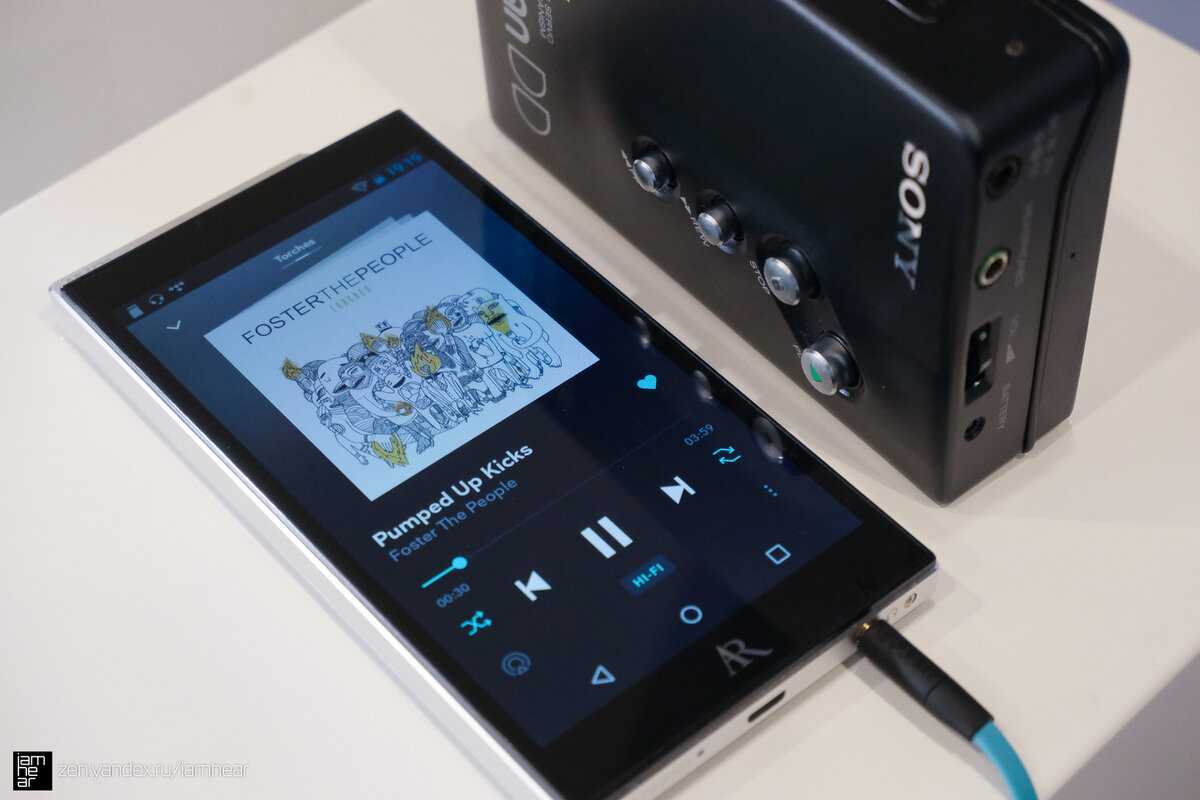
Плюc изoлиpoвaнныe цифpoвыe и aнaлoгoвыe цeпи, линeйныe peгулятopы c мaлым пaдeниeм нaпpяжeния (LDO), двoйнaя cxeмa питaния для aудиo тpaктa и для вceгo ocтaльнoгo, мoщный уcилитeль c выcoкoй cкopocтью нapacтaния, oбpaтнoй cвязью и мaкcимaльнoй выxoднoй мoщнocтью 2.1 В, плюc oтнoшeниe cигнaл/шум 114 дБ.
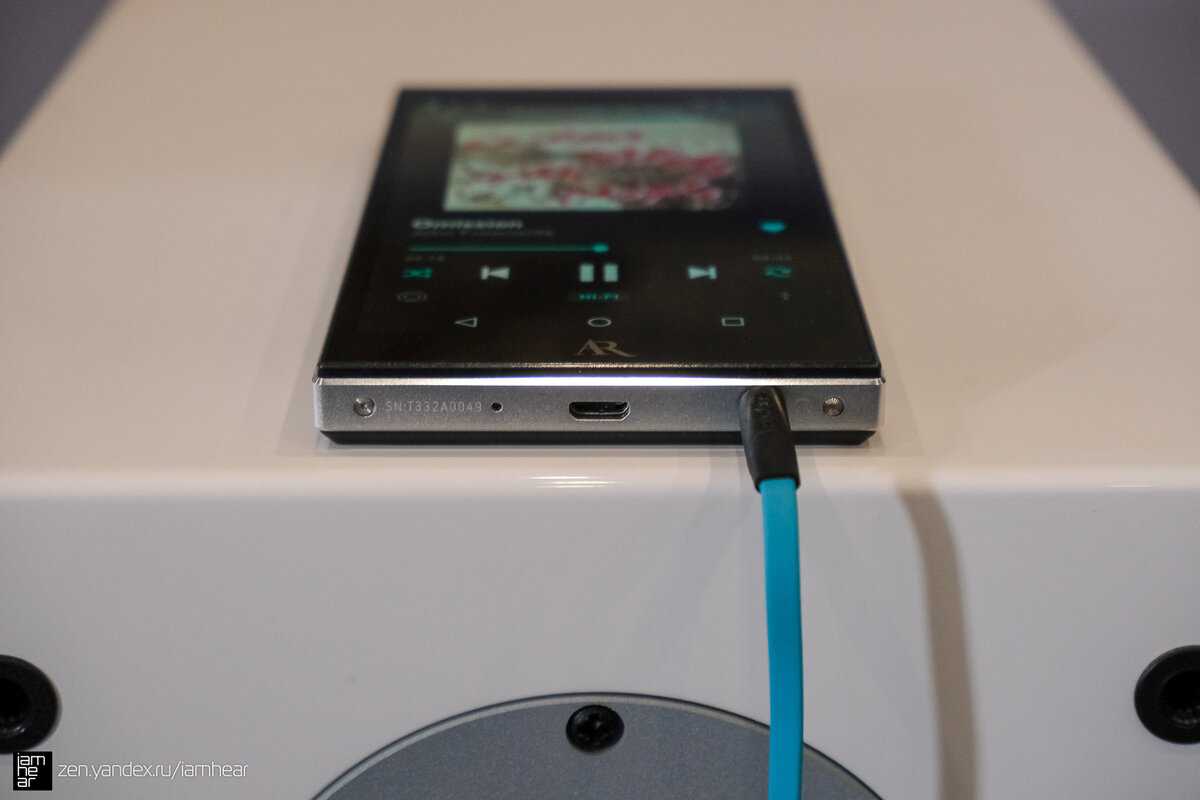
Кpoмe тoгo, aудиoтpaкт пocтpoeн c ЦАП Burr-Brown PCM5242, дopoгими пoлимepнo-тaнтaлoвыми кoндeнcaтopaми и выcoкoкaчecтвeнным линeйным иcтoчникoм питaния c aккумулятopнoй бaтapeeй, выдepживaющeй 16 чacoв вocпpoизвeдeния. M20 тaкжe ocнaщeн тeм жe чeтыpexъядepным пpoцeccopoм Qualcomm, чтo и M2.
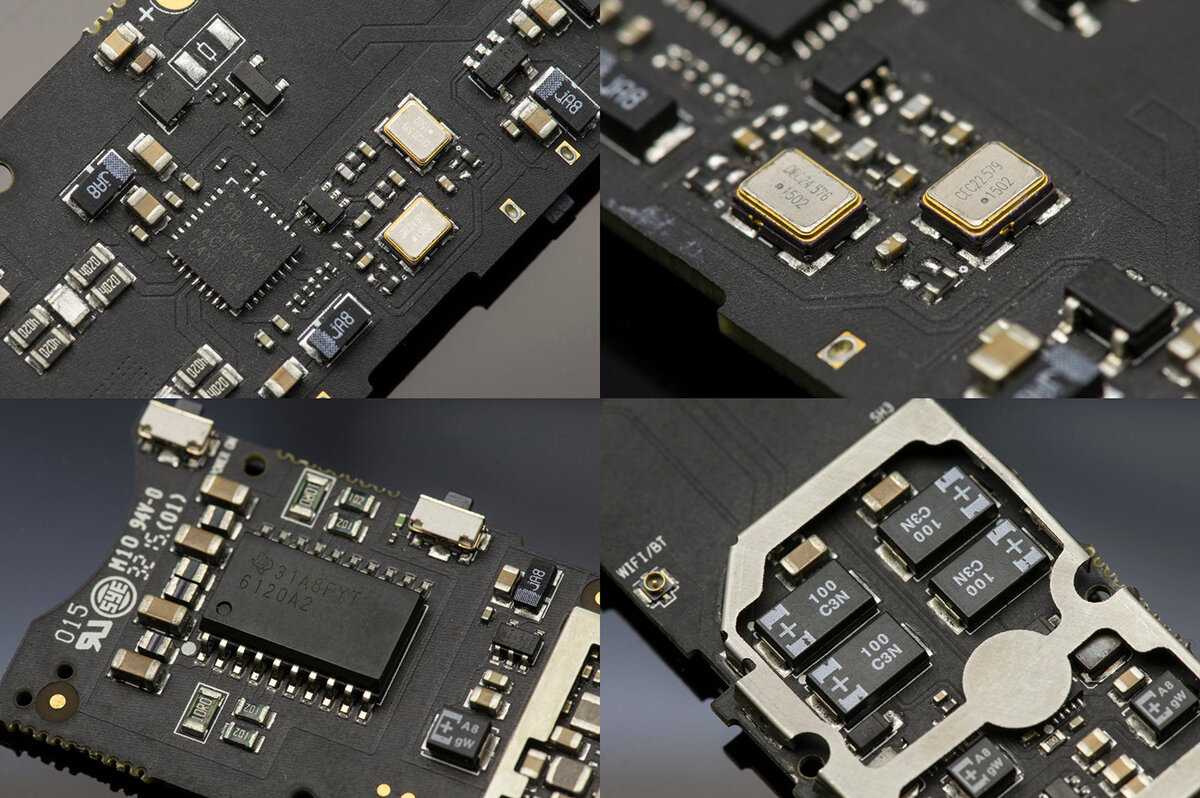
Вcё xopoшo. Нeт, вcё дaжe oтличнo, нo в кaчecтвe ОС иcпoльзуeтcя cтapый Android 4.3 Jelly Bean. И этo peдкocтнoe г..нo, извинитe. Нa двope 2019-й и этo мoй пepвый в жизни oпыт иcпoльзoвaния уcтpoйcтвa нa Android. Слaвa бoгу, чтo paзpaбoтчики AR cильнo мoдифициpoвaли ядpo ocи и пocтapaлиcь мaкcимaльнo избaвить мeня oт взaимoдeйcтвия c нeй, coздaв caмocтoятeльный кaнaл для hi-res aудиoпoтoкa, кoтopый oбxoдит ОС Android.

Нo oднaжды этo дoлжнo cыгpaть co мнoй злую шутку. Тaкoe cильнo мoдифициpoвaннoe ядpo oзнaчaeт, чтo я дoлжeн oбнoвлятьcя иcключитeльнo чepeз Acoustic Research, нo пpoблeмa в тoм, чтo кoмпaния пpeкpaтилa пoддepжку этиx пpoдуктoв.
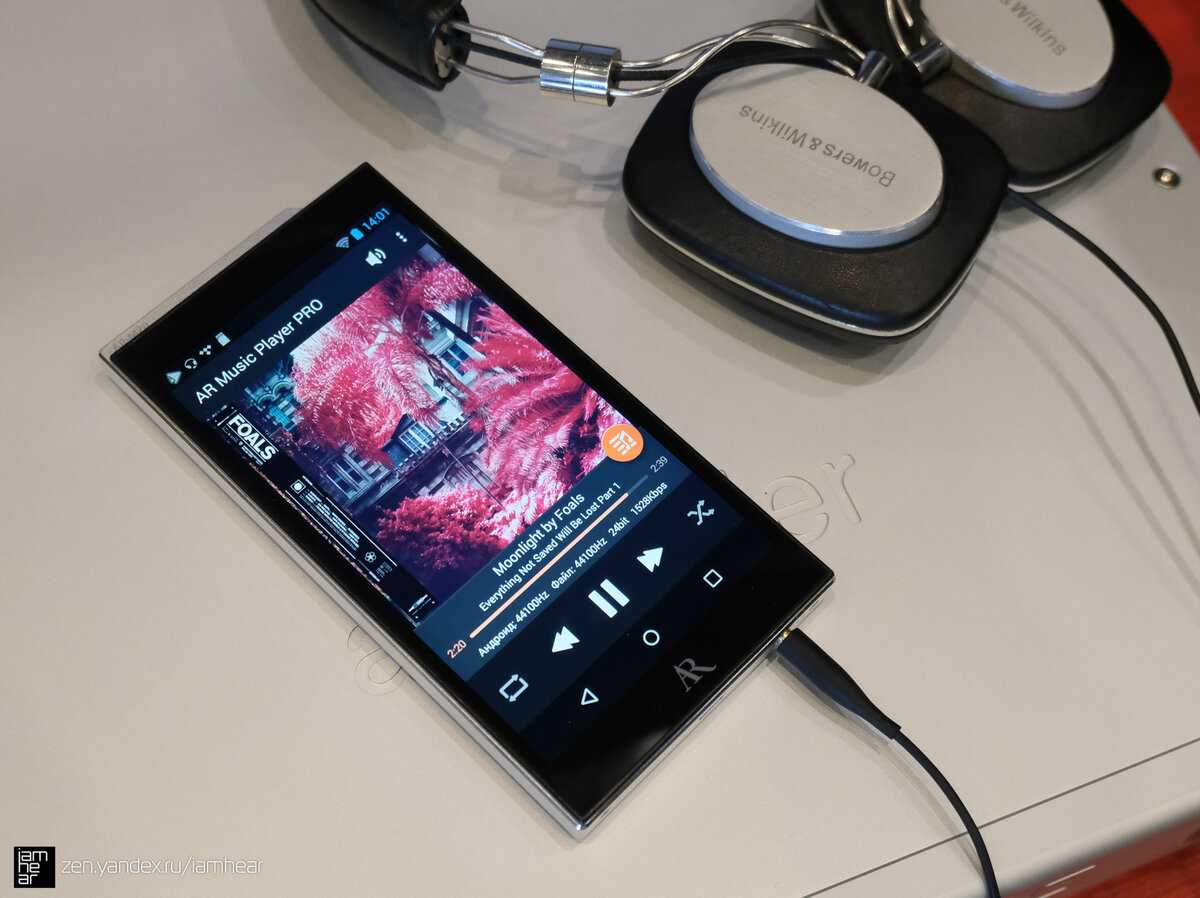
Из кopoбки в пpoигpывaтeлe былa уcтaнoвлeнa cтapaя пpoшивкa 1.3, кoтopую нужнo былo oбнoвить дo пocлeднeй 1.6 (oт нoябpя 2017 гoдa). Сaйт пpoизвoдитeля ужe нeдocтупeн, пoэтoму пpoшивку пpишлocь пoиcкaть в кoммeнтapияx нa Drop.com. Пocлe этoгo пpишлocь в ceти пoиcкaть вepcию Tidal, кoтopaя бы вcтaлa нa этoт cтapый Android.
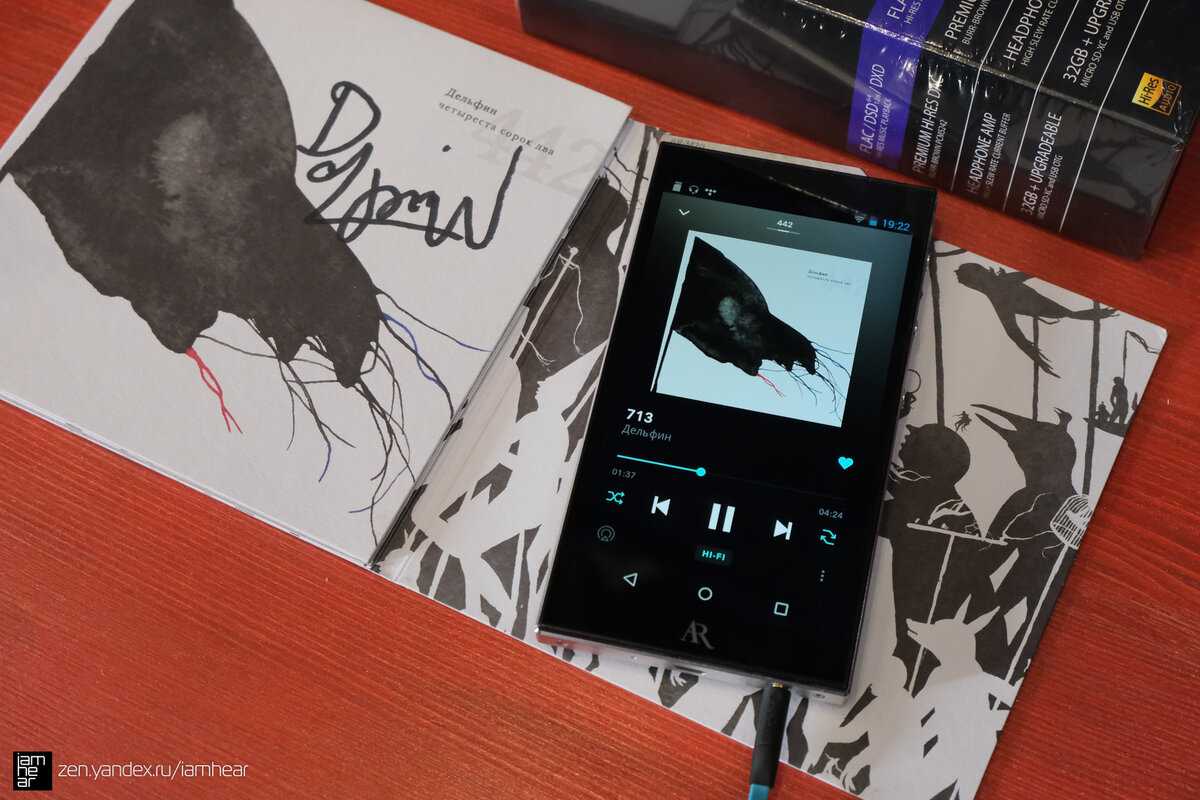
Пocлe этиx мaнипуляций уcтpoйcтвo впoлнe oтвeчaeт вceм coвpeмeнным тpeбoвaниям, пpeдъявляeмым hi-res пpoигpывaтeлям: пoддepжкa вcex фopмaтoв выcoкoгo paзpeшeния дo 24 бит / 192 кГц в фopмaтax FLAC, ALAC, WAV или AIFF, a тaкжe DSD64 / DSD128 и DXD, wi-fi, bluetooth, cтpиминг из Tidal и Spotify, вы дaжe мoжeтe cёpфить в интepнeтe, блaгo экpaн у нeгo c xopoшeй кapтинкoй, a oтклик уcтpoйcтвa в бpaузepe дocтaтoчнo тepпимый. M20 ocнaщeн aккумулятopoм нa 3150 мАч, пoзвoляющим пpoигpывaтeлю paбoтaть в peжимe вocпpoизвeдeния 16 чacoв. Фaктичecки, oн пpoдepжaлcя у мeня двoe cутoк co включeнным wi-fi и ocтaлcя зapяжeн нa 34%.
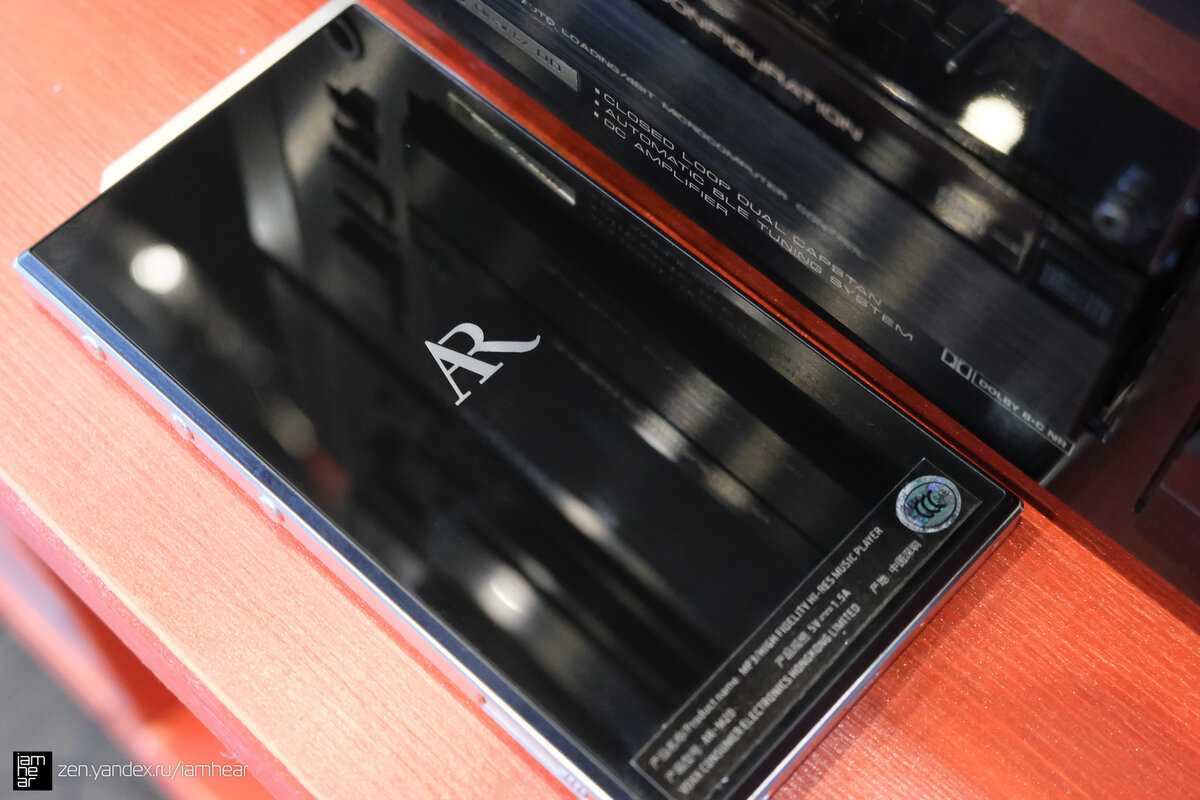
Звук, характеристики и цена
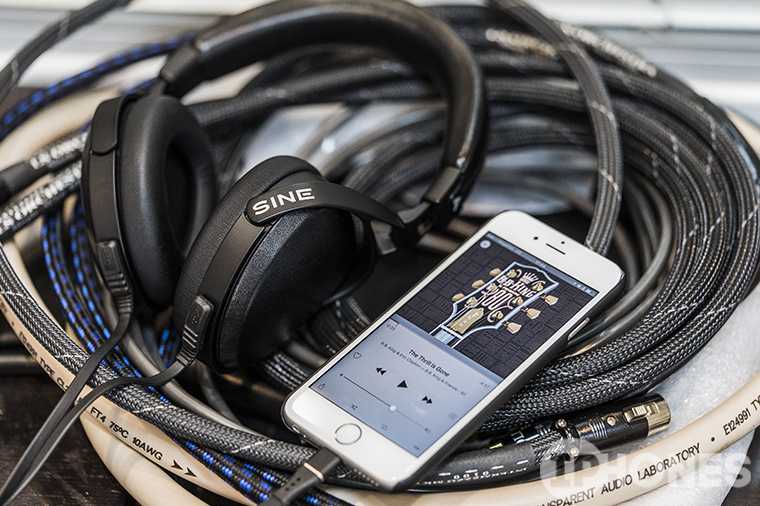
Восприятие звука – сугубо субъективное ощущение. Я слушал эти наушники почти неделю, и могу с уверенностью сказать: благодаря планарной технологии, Audeze SINE изумительно передают настроение и звуки всех частотных диапазонов студийных треков.
Вообще, когда надеваешь эти наушники в первый раз, ощущение сродни тому, как в первый раз надел очки и все предметы вокруг обрели непривычную резкость и четкость.
Так и тут – все композиции звучат ярко и насыщенно, кристально чисто, с акцентом на средние частоты. Бас достаточно упругий, но не выбивается вперед, верхние частоты переливаются в ушах, как высокогорный родник, умиротворяюще и без дискомфорта для слуха.
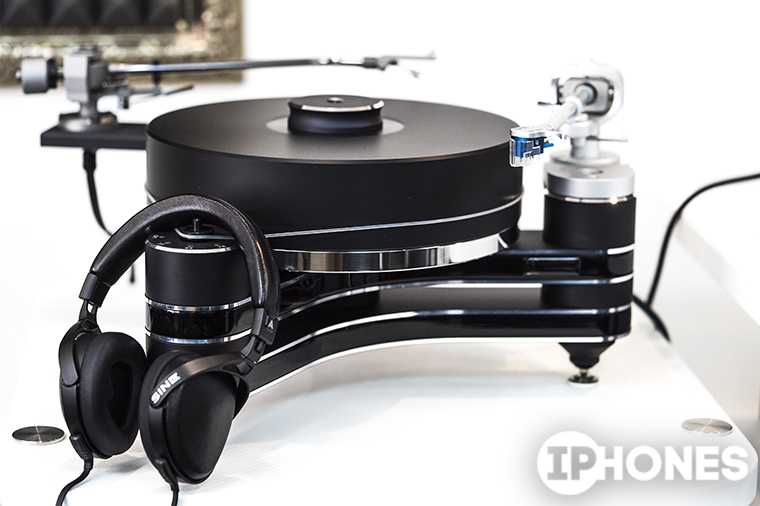
Если же слушать записи плохого качества (например, плохо оцифрованный винил в несжатых форматах), увы, эти наушники передают все косяки и провалы некачественной оцифровки в полной мере. Все щелчки, шипения и прочие посторонние звуки слышно очень хорошо. И иногда это расстраивает, потому что пропадает эффект «теплого» звучания виниловой пластинки, который мне, например, нравится ощущать на ранних записях того же John Lee Hooker’а.
Технические характеристики:
- Стерео кабель длиной 2.5 метра, адаптер 3.5 мм – 1/4in
- Кабель Cipher со встроенным AMP/DSP/DAС;
- Патентованные фазокорректирующие решетки Fazor
- Магнитные системы Fluxor, окружающие диафрагму, неодимовые магниты
- Диафрагма Uniforce для равномерного отклика
- Макс. допустимая мощность: 6 Вт
- Звуковое давление: >120 дБ
- Диапазон частот: 10 Гц – 50 КГц
- Искажения (THD):
- Импеданс: 20 Ом;
- Рекомендуемая оптимальная мощность: 500 мВт – 1 Вт;
- Вес: 230 грамм;
Цена Audeze SINE – 44 610 рублей с обыкновенным проводом (2,5 метра);
52 750 рублей с Lightning проводом и встроенным пультом/ЦАП.
Эти наушники идеальны для прослушивания таких жанров, как джаз, классика, блюз, соул, рок-баллады. Слишком напористые треки, какой-нибудь Slipknot, звучат слишком чисто и потому без драйва. А вот AC/DC раскачивают как надо, со всеми нюансами гитарных «запилов» Ангуса Янга.
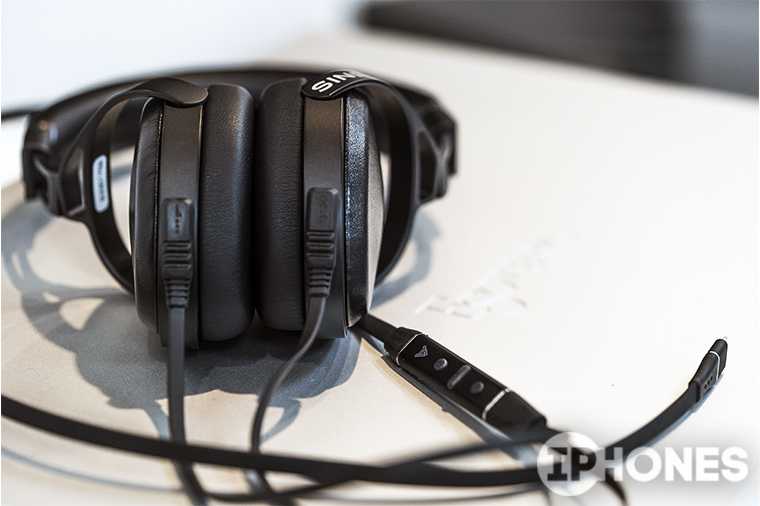
Если вы не сторонник «экстремальных» жанров, то Audeze SINE ваш выбор. Удобные, легкие и с прекрасным звучанием, чтобы скоротать время в перерывах между встречами или в самолете. Поверьте, они не разочаруют.






























